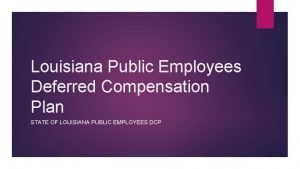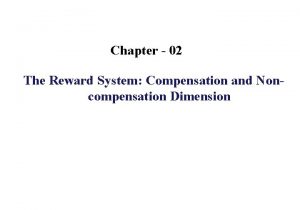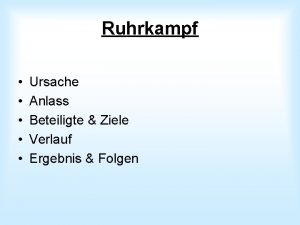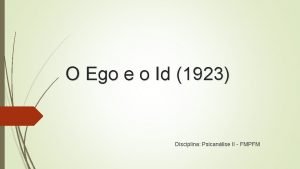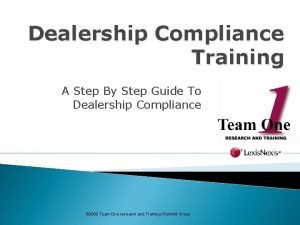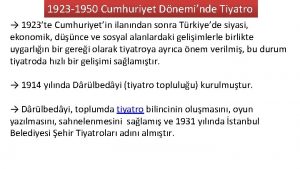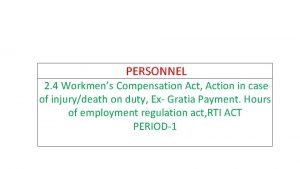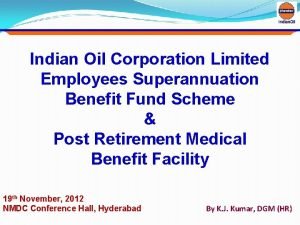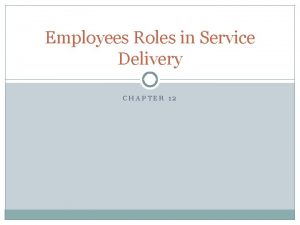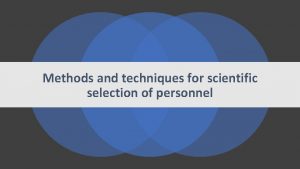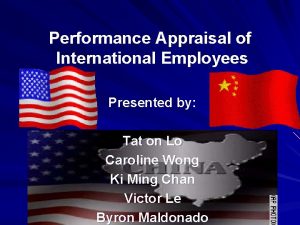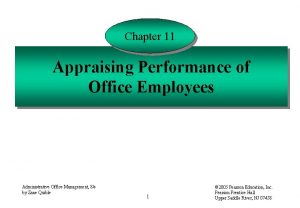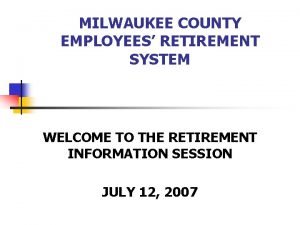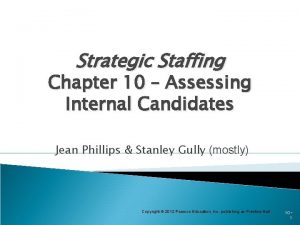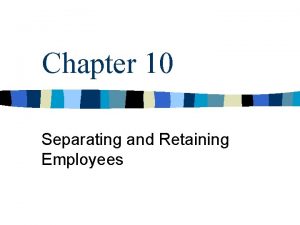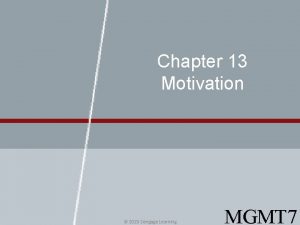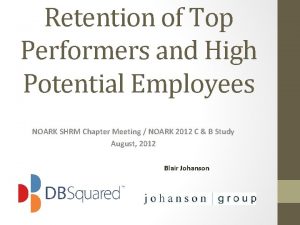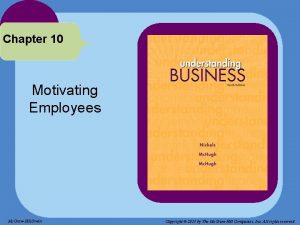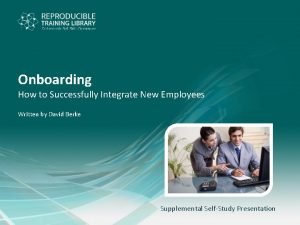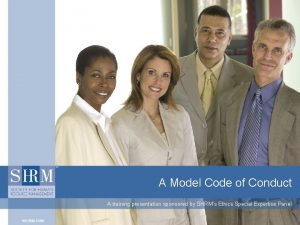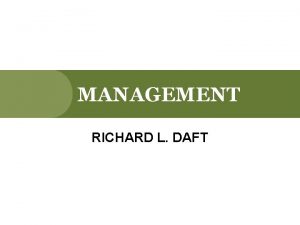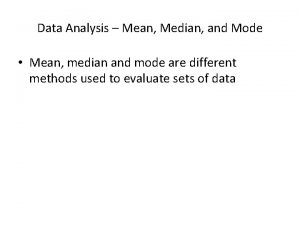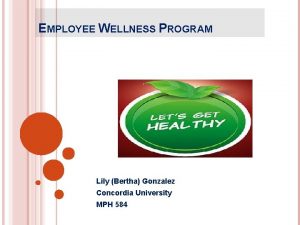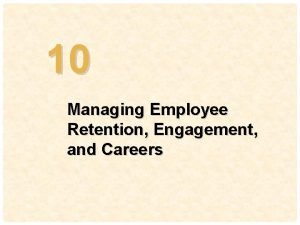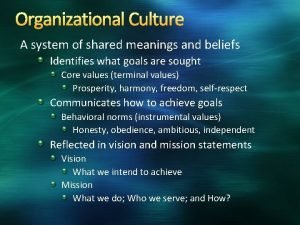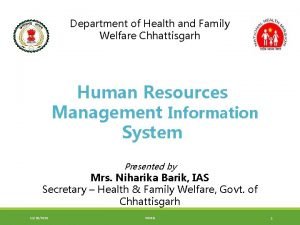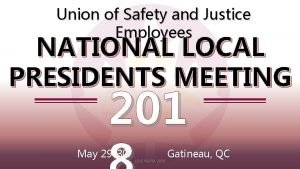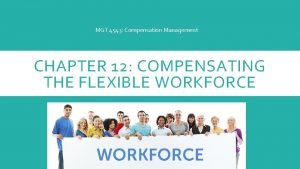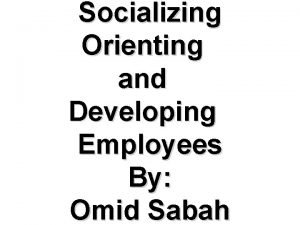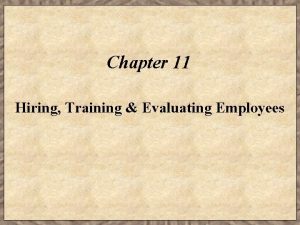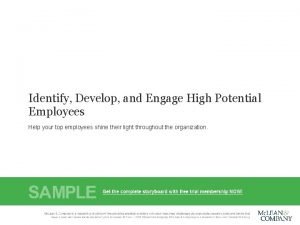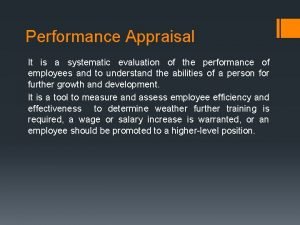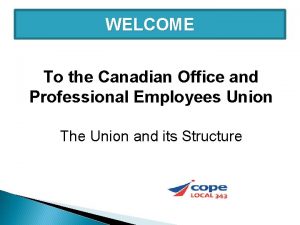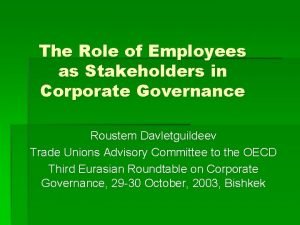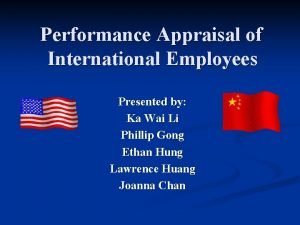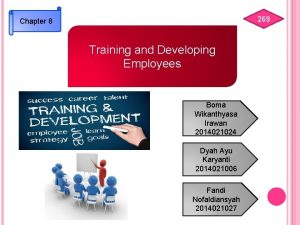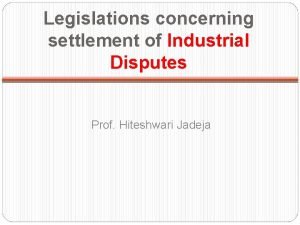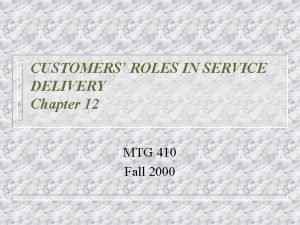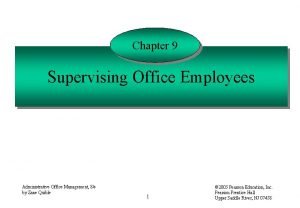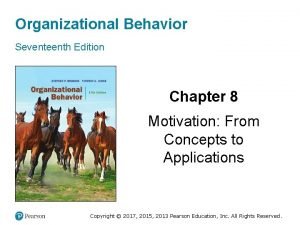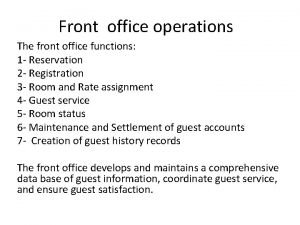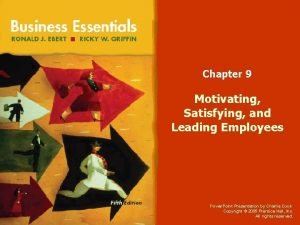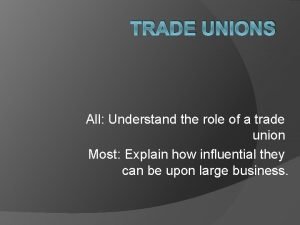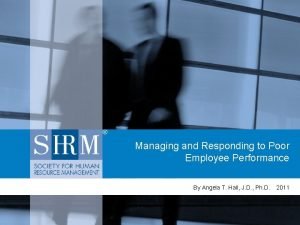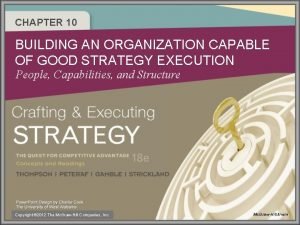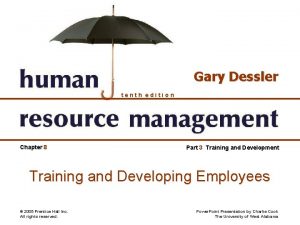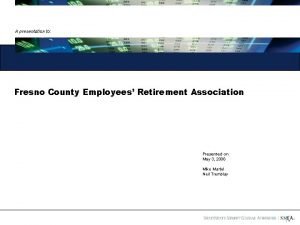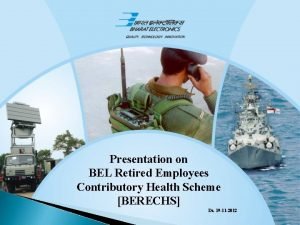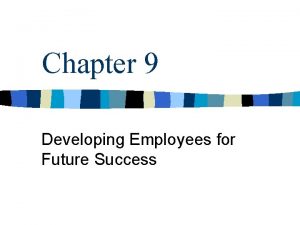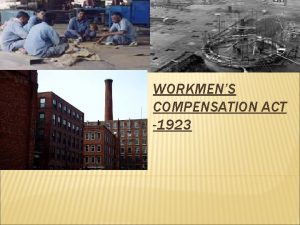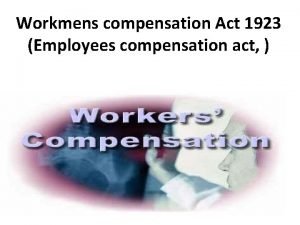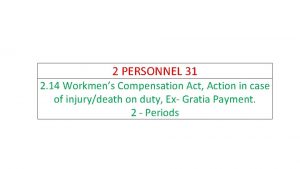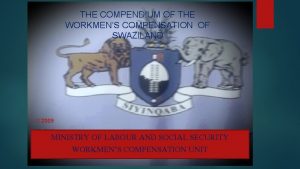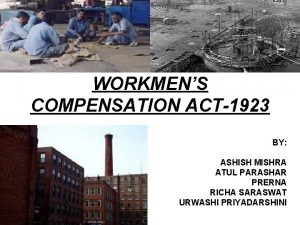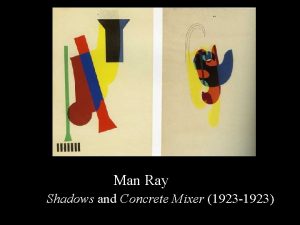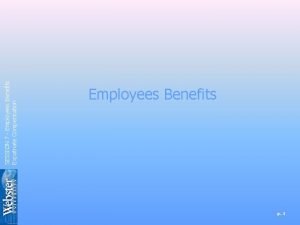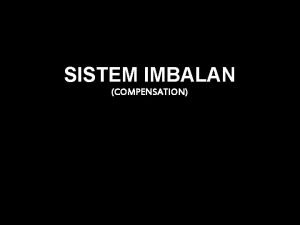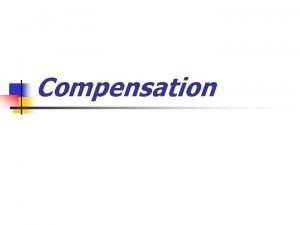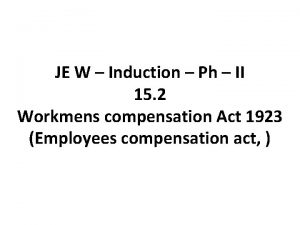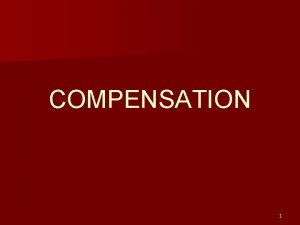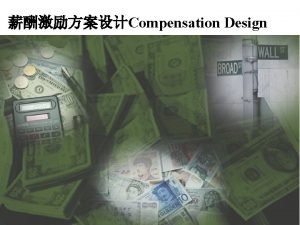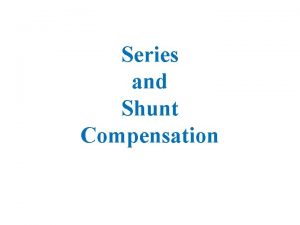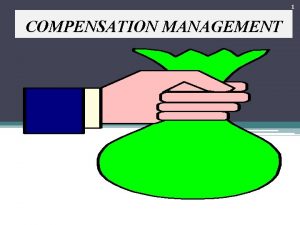Workmens compensation Act 1923 Employees compensation act v




















































































- Slides: 84

Workmens compensation Act 1923 (Employees compensation act, )

v Amendment 1)Title: Before Workmen‟s Compensation Act 1923 After - Title of the Act amended to “Employees Compensation Act 1923”. 1)Words and expressions: Before Refer to the • The Employees Compensation Act, 1923 extends to the whole of India. • It came into force on the first day of July, 1924. It is social security legislation. • The Employees Compensation Act, 1923 imposes statutory liability upon an employer to discharge his moral obligation towards employees when they suffer from any physical • disabilities or diseases, during the course of employment in hazardous working conditions. • The aim of the Act is to provide quick and cheaper disposal of disputes relating to the compensation which is not possible in comparison in case of proceedings of civil law. The Act also helps the dependent's to get relieved from the hardship, rising from accident. • Employees Compensation Act, 19 relieved from the hardship, rising from accident.

Employees Compensation Act, 1923 - Factories Plantations Transport Establishments Construction Works Railways Ships Circuses

• Not applicable to: – Members of armed forces of union – Employees covered by ESI Act, 1948. (Dependents benefits available) – Casual Workers & workers employed otherwise than for employer‟s trade or business

Section 2 (1) (b) of the Act define, “Commissioner” as a • Commissioner for Workmen's Compensation appointed under section 20; Compensation [section 2 (1) (c)] means compensation as provided for by this Act; Employer [section 2 (1) (e)] includes: • i) any body of persons whether incorporated or not , ii) any managing agent of an employer , iii) legal representative of a deceased employer, iv) any workman whose services are temporarily lent or let on hire to another person, by the person with whom the workman has entered into a contract of service or apprenticeship; means such other person while the workman is working for him.

• (ii) “Total disablement” means such disablement, whether of a temporary or permanent nature, as incapacitates a workman for all work which he was capable of performing at the time of the accident resulting in such disablement. • Provided that permanent total disablement shall be deemed to result from every injury specified in Part I of Schedule I or from any combination of injuries specified in Part II thereof where the aggregate percentage of the loss of earning capacity, as specified in the said Part II against those injuries, amounts to one hundred per cent or more.

EMPLOYER’S LIABILITY FOR COMPENSATION • • • Ø OCCUPATIONAL DISEASES: 1) Part A of schedule III 2) Part B of schedule III 3) Part C of schedule III Ø PERSONAL INJURY: Personal injury Accident Arising out of employment & in course of employment Ø EMPLOYER IS NOT LIABLE WHEN: Disablement not exceeding 3 days Accident due to influence of drink, drugs or disobeyed orders, disregards of safe guards

Occupational Diseases - Hearing impairment caused by noise. - Lung Cancer caused by asbestos dust. - Diseases due to effect of heat/cold in extreme hot/cold climate, etc.

• The three tests for determining whether an accident arose out of employment are : 1)At the time of injury workman must have been engaged in the business of the employer and must not be doing something for his personal benefit;


EMPLOYER’S LIABILITY WHEN CONTRACTOR IS ENGAGED Section 12 of the act covers the employer‟s liability when contractor is engaged for the purpose of doing any work in respect of employer‟s trade or business. Such contractor has to execute the work with the help of workman engaged by him. But the employers will liable for the payment of compensation only in the following circumstances: • a. ) The contractor is engaged to do a work which is part of the trade or business of the employer. • b. ) The workmen were engaged in the course of or for the purpose of his trade or business. • c. ) The accident occurred in or about the premises on which the employer has under taken or undertakes to execute the work. • This provision, however does not prevent a workman fromrecovering compensation from the contractor instead of the employer. Here, the amount of compensation shall be calculated with reference to the wages of the workman under

Doctrine of Notional Extension • The expression in the course of his employment', connotes not only actual work but also any other engagement natural and necessary thereto, reasonably extended both as regards workhours and work-place. • It refers to the time during which the employment continues… • However, this is subject to theory of notional extension of the employer's premises so as to include an area which the workman passes and re-passes in going to and in leaving the actual place of work. There may be some reasonable extension in both time and place and a workman may be regarded as in the course of hisemployment even though he had not reached or had left his employer's premises. This is also called as the Doctrine of Notional Extension. •

Compensation for What? • Amendments • Sec. 4 (a): -The minimum ceiling limit of compensation for death was Rs. 80000/-Now it has been revised to Rs 1, 20, 000/ • Sec. 4(b): -The minimum ceiling limit of compensation for permanent total disablement was Rs. 90000/-Now it has been revised to Rs 1, 40, 000/ • sec. 4(2): -This sub-section was added after sub-section(2). This entitles an employee to reimbursement of actual medical expenditure incurred by him for injuries caused during the course of employment. • Explanation II to clauses(a)&(b) of Sec. 4: -Explanation –II prescribes the maximum wage limit at Rs. 4000/-p. m. for the purpose of computing compensation for death and permanent disablement. The. Explanation was omitted and a new sub-section (IB) has been added after Sub-section IA of sec. 4 whereby the maximum wage limit has been revised to Rs. 8000/-p. m.

• • • Sec-4 Provides for Compensation for: -Death, -Permanent Total, -Permanent Partial , -Temporary Partial, -Temporary Total

Compensation to be paid • When due? • -as soon as it falls due i. e. liability for payment of compensation is fixed on employer • �If employer do not accept the compensation to the extent claimed: • -should make provisional payment to the extent he accepts • -payment should be deposited with commissioner for employee‟s compensation • -Employee having right to make any further claim. • �Time limit for payment: • -within 1 month from due date • -if not, commissioner direct the employer to pay the arrears with simple interest rate 12% or as prevailing in the bank. • -further delay: -50% of amount due will be recovered as penalty.

Amount of compensation • Section 4: • �Where death of a workman results from the injury: • -An amount equal to 50% of the monthly wages of the deceased workman multiplied by the relevant factor or an amount of, Rs. 1, 20, 000 whichever is more. • �Where permanent total disablement results from the injury: • -An amount equal to 60% of the monthly wages of the injured workman multiplied by the relevant factor or an amount of Rs. 1, 40, 000, whichever is more.

Amount of compensation • Where permanent partial disablement results from the injury (injury listed in part II of schedule I): • -% of loss of earning capacity that such % of compensation payable • �Where temporary total/ partial disablement of a workman results from the injury: • -An amount equal to 25% of the monthly wages payable every half-month

Procedure for calculation • Higher the age –Lower the compensation • -Relevant factor specified in second column of Schedule IV giving slabs depending upon the age of the concerned workman. • �Example: In case of death: • • -Wages Rs. 3000 PM -Age 23 years -Factor as schedule IV : 219. 95 * 1, 500 -Amount of compensation Rs. 3, 29, 935. 00 -In case of total disablement: Rs. 3, 95, 910. 00 �Schedule II: List of persons engaged in different employment. �Schedule III: List of occupational diseases. �Schedule IV: Relevant factor.

Review of Half-Monthly payment • Half-Monthly payment may be reviewed by Commissioner on the application by Employer or employee. • �Application must be accompanied by certificate of qualified medical practitioner that there has been changed in the condition of employee. • �On review, Half-Monthly payment may be continued, increased, decreased, ended or converted into lump-sum.

Defence available to employers before E. C. Act, 1923. • Doctrine of assumed risk „volenti non fit injuria‟-where there is consent there is not injury. • Doctrine of common employment Employer notliable to pay compensation to employee for injury Workerworking with several persons for common purpose. Worker injured by some act or commission of some of the persons of his group. • Doctrine of contributory negligence Employees not entitledto compensation for injury caused by his own negligence. (employer not responsible for negligence on the part of employees. ) • Endof personal action with death. Personal action (of employee) came to an end due to death of employee.

Penalty • Section 4 A: • -Where an employer is in default in paying the compensation due under this Act, within one month from the date it fell due, the Commissioner shall: • a)Direct that the employer in addition to the amount of arrears, pay simple interest there on at the rate of 12% per annum or on such higher rates. • b)Commissioner has the power under the Act to impose penalty and the interest on the cleared amount as per the provision of the act.

Distribution of compensation • Section 8: • �The compensation payable for death and • �The compensation payable to a woman or person of legal disability shall be through the commissioner only. • �Employer can make advance payment directly to dependents in case of death equivalent to three months salary of the deceased person. • �Employer is exonerated from his liability if he deposits the compensation amount with the commissioner within the stipulated time. • �The commissioner shall call dependents of the deceased and determine the method for distribution of compensation among them. • �If no dependents are found then amount shall be refunded to the employer. • �On request by the employer the commissioner shall furnish the details of disbursement.

Contracting Out of the compensation • Section 17 • �Any contract or agreement whereby a workman relinquishes any right of compensation from the employer for personal injury arising out of or in the course of the employment, shall be null and void in so far as it purports to remove or reduce the liability of any person to pay compensation under this Act.

Ways open to employees for claiming compensastion: • • �Injured employee may: -file a civil suit; or -claim compensation under E. C. Act, 1923 �Employee can not file a suit for damages in any court of law if he filed claim under E. C. Act‟ 1923.

Comparison • Civil Suit • • Risky & Costly • Employer can put forward all defenses available to him under laws of torts. E. C. Act, 1923 Safe & less Costly

NOTICE AND CLAIM • Section 10 • �To claim the compensation: • �The claimant shall give notice of accident to the employer or by entering in the notice book within the reasonable period. • �Every such notice shall give the name and address of the person injured, the cause of the injury and the date on which the accident happened and • �Submit the claim application to the commissioner within two years from the date of accident. • �In case of occupational disease the accident is deemed to have occurred on the first day of disease. • �Defect if any in the notice or not giving notice or delayed application will not bar the claim for compensation.

Procedure in the proceedings before the commissioner • • • �Section 19 -Reference to commissioners. �Section 20 -Appointment of commissioner. Section 20 �Section 21 -Venue of proceedings and transfer. �Section 22 -Form of application. �Section 22 A –Power of the Commissioner to require further deposit in case of fatal accident. �Section 23 –Powers and procedure of Commissioners. �Section 24 –Appearance of Parties. �Section 25 -Methods of recording evidence. �Section 26 –Costs. �Section 27 –Power to submit cases. �Section 28 –Registration of Agreements. �Section 29 –Effect of failure to register agreement.

Appointment of commissioner • Section 20 • �The State Government may, by notification in the Official Gazette, appoint any person to be a Commissioner for Workmen's Compensation for such area as may be specified in the notification. • �Any Commissioner may, for the purpose of deciding any matter referred to him for decision under this Act, choose one or more persons possessing special knowledge of any matter relevant to the matter under inquiry to assist him in holding the inquiry.

Reference to commissioners • �Section 19 • � 19(1): -If any question arises in any proceedings under this Act as to the liability of any person to pay compensation (including any question as to whether a person injured is or is not a workman) or as to the amount or duration of compensation (including any question as to the nature or extent of disablement), the question shall, in default of agreement, be settled by a Commissioner. • � 19(2): -No Civil Court shall have jurisdiction to settle, decide or deal with any question which is by or under this Act required to be settled, decided or dealt with by a Commissioner or to enforce any liability incurred under this Act.

Case laws • �State of Kerala v. khadeeja beevi, 1988 • -A govt. servant who is employed as “Mahout” in the forest deptt. is also treated as employee under this act even if he is covered by family pension, GPF, & family benefits scheme under the govt. • �N. A. CHAUHAN v. N. K. SHAH, 1991 • -Expression “arising out and in course of employment”. The words suggest that there should be casual relationship between the employer and accident. • �New India assurance co. ltd. v. Mohan Kumar sahu, 2004 • -Person engaged for one day to drive vehicle of the owner is also the employee in this act. The Owner have definite control over the person. The person was driving the vehicle on the direction of the owner of the vehicle. His engagement for one day only will not throw him out of the definition of Employees u/s 2(n) of the act.

Case laws • �G. S. R. T. C. v/s Ashok Kumar keshavlal Parekh, 1999 • Sec. 16 of Apprentices Act, 1961 entitles a apprentice to claim compensation under this act if Personal Injury caused to him by accident arising out of or in course of his training as an apprentice. • �Radhamony v/s Secretary, Department Of Home Affairs, 1995 • A Person employed as driver comes under the category of employees irrespective of the position whether he is a non-govt. employee or govt. employee. • �Devidayal Ralyaram v/s Secretary of state of AIR, 1937 • According to Doctrine Of Added Peril if a workman while performing his duty does something which is not required to do and which involves extra danger, the employer would not be liable to pay compensation if any injury caused to him.

Cases of Accidents Arising Out of & In the Course of Employment • �Railway employee was ordered to travel to a certain station to repair a water main. When he had finished the work & was crossing the platform to catch the train, he slipped & died as a result. • �A watchman in the course of his duty lifted G. I. Pipe in order to keep it in a safe place. While doing so, he received injury. • �An employee suffered from heart disease & died on account of strain of work by keeping continuously standing or walking. • �An employee suffering from heart disease after having worked for 8 hours on a hot day in a mill collapsed. There was evidence to the effect that collapse was likely to have been caused by strain of work on a diseased heart.

• Workmen's Compensation Act and Medical Examination and Certification under the Workmen's Compensation Act

• Definition and Application: - (1) “The Workmen's Compensation Act is an act to provide for the payment by certain classes of employers to their workmen of compensation for injury by accident” (2) “Work man” means any person (other than a person whose employment is of a casual nature and who is employed otherwise than for the purpose of the employer’s trade or business) who is -

• i) a Railway servant as defined in clause 34 of section 2 of the Railways Act, 1989 (24 0 f 1989)] not permanently employed in any administrative, district or sub-divisional office of a Railway and not employed in any such capacity as is specified in Schedule II or ii) employed in any such capacity as is specified in Schedule II ,

“Partial disablement “ means, • where the disablement is of a temporary nature, such disablement as reduces the earning capacity of a workman in any employment in which he was engaged at the time of the accident resulting in the disablement and, where the disablement is of a permanent nature, such disablement as reduces his earning capacity in every employment which he was capable of undertaking at that time: provided that every injury specified in Part II of schedule I shall be deemed to result in permanent partial disablement;

“ Total disablement” means • such disablement whether of a temporary or permanent nature, as incapacitates a workman for all work which he was capable of performing at the time of the accident resulting in such disablement: provided that permanent total disablement shall be deemed to result from every injury specified in part I of schedule I or from any combination of injures specified in Part II thereof where the aggregate percentage of the loss of earning capacity as specified in the said Part II against those injuries amounts to 100%. or more;

Compensation: • If personal injury is caused to a workman by accident arising out of and in the course of his employment, his employer shall be liable to pay compensation in accordance with the provision of this act provided that the employer shall not be so liable.

• a) in respect of any injury which does not result in total or partial disablement of the workman for a period exceeding three days. b) in respect of any injury not resulting in death or permanent total disablement caused by an accident which is directly attributable to:

• i)The workman having seen at the time there of under the influence of drink or drugs. ii)The willful disobedience of the workman to an order expressively given or to a rule expressively framed, for the purpose of securing the safety of workman or iii)The willful removal or disregard by the workman of any safety guard or other device he knew to have been provided for the purpose of securing the safety of workman.

• Unless otherwise specified, the term "Railway Medical Officer" will mean the following : • (i) Assistant Divisional Medical Officer. • (ii) Divl. Medical Officer. • (iii) Sr. Divl. . Medical Officer

All injury cases to be examined carefully: • It is essential that all Railway doctors should be conversant with the Workmen's Compensation Act as they are likely to be called upon in the discharge of their duties to examine, certify and assess the loss of earning capacity and the consequent compensation to be paid therefor to Railway employees injured on duty and governed by the said Act.

• (2) Besides this, a Railway doctor may have to appear before a Commissioner appointed under the Act to give evidence in cases of dispute between the administration and the employee. It is, therefore, necessary that every case of injury coming under the Workmen's Compensation Act should be viewed as a potential case likely to be brought before a Commissioner and every care should be taken to note down all particulars of such cases.

Medical Examination of injured workmen: - • If a workman sustains injury while on duty, his immediate superior will either arrange for the injured workman to be examined by the nearest Railway Medical Officer at the site of the accident, or will arrange for the injured workman to proceed, or to be conveyed, to the authorised medical officer with a memo on the prescribed form as given in Annexure I to this Chapter. The Railway medical officer, after examination of the injured workman, will issue, if the workman is not fit to return to work immediately,

• a sick certificate in the prescribed form (Sick certificate) as given in Annexure XI to chapter V with a rubber stamp bearing the words: "This injury is consistent with the statement that it was caused by accident", as well as a certificate in the prescribed form as given in Annexure II to this Chapter giving particulars of the part of the body injured, the nature of the injury - whether simple or grievous - and the probable period of disablement, and forward the same to the immediate superior of the injured workman.

Injury Report Register: • (1) An entry of all cases of injuries with which a Railway doctor has to deal must be made in an accident register which is to be maintained in every hospital and health unit. This entry is in addition to the entries made in any other register, such as on daily attendance register or on case papers.

• (2) The entry in the accident register must be made as soon as possible after the patient is seen for this first time and thus becomes an extremely valuable record of the first clinical examination. Sufficient space should be left below the entry so that additional information obtained later on such as Xray reports, admission to hospital, or subsequent death of the patient during the period of treatment for the injuries can be entered neatly and without encroachment on the next entry.

• (3) Records of injuries to employees " on or off duty ", family members of employees and members of the general public must be kept each in a separate section of the register. There should be diagrammatic figures on the reverse of the injury report, on which the details of injuries are to be shown.

• (4) The Railway medical Officer at the time of examination will note carefully the list of injuries on the prescription slips which should not be destroyed as they may be required at any future date for assessing the extent of disablement for purposes of payment of compensation claimed by the injured workman. Prescription slips should also be treated as confidential documents.

Disposal of claim for an injury when no sign of injury is found: • If a patient claims that he is injured and clinical examination shows no sign of injury, these facts must be recorded in the accident register, but all such cases are to be referred to the CMS/MS in-charge of the division.

Caution where no sign of injury is seen. • Attending Medical Officer must make a clear distinction between the complaints of the patient and the physical signs of injuries observed. Doubtful cases should be referred to the CMS/MS in-charge of the Division, postponing a diagnosis and issue of certificate until his advice has been received. Pre-existing disease and deformities must be noted.

Case Sheets: • (1) Case sheets should be made out for all cases of injuries and are to be used for making day-to-day notes on the progress of the cases, instructions from the CMS/MS in-charge of the Division, results of X-ray examination, and so on.

• (2) These case papers are not to be handed over to a patient to be taken home, where it may be lost, mutilated or soiled, as it is a very valuable record of the case subsequent to the first entry in the accident register. It must be retained as an official record.

• (3) CMS/MS s in-charge of the division will make their own local arrangements regarding the safe transmission of these injury case papers from their hospitals to subordinate hospitals and health units. In addition to the records outlined above entries of attendance of the injured person will be made also in the daily attendance register just as for any other patient, and the injury case paper will bear the serial number as recorded in the daily attendance register.

Certification and attendance of injured employees: • (1) All injured employees are to be regarded from the beginning of attendance as persons making a claim or likely to make a claim that the injury was sustained on duty and, therefore, the Railway doctor must not assume that because the accident report in the prescribed form as given in Annexure III has not yet been received, the case is not one coming under the Workmen's Compensation Act, for often the accident report is received by the Railway doctor some time after the accident.

• (2) When an employee attends a Railway hospital or health unit for an injury or alleged injury, he will be issued a sick certificate only if he is unable to perform his duties. If the attending Medical Officer is on doubt regarding the employee's fitness for work or whether the physical signs shown are due to an injury, the case shall be referred at once to the CMS/MS in-charge of the Division, certification being postponed until his advice is received.

• (3) The CMS/MS s in-charge of the Division can make their own local arrangements regarding cases being sent up to them, but it is considered essential that at least all cases of injuries to the eye or of suspected fractures shall be sent to them for examination at once, if the patient is in a position to be transported safely, along with the injury case paper, otherwise, the. CMS/MS in-charge of the Division may be called by theattending Medical Officer to the station where the injured person is lying. In the case of an eye injury, both the eyes must be examined and detailed notes made of their condition, and visual acuity figures recorded.

• 4) In all cases of injury to the eye or near about the eye, vision is each eye at the time of admission and at the time of discharge should be recorded. • (5) If an employee is unfit to work and shows definite signs of injury, a sick certificate is to be issued immediately and if a definite diagnosis cannot be made, the best provisional diagnosis under the circumstances can be entered in the certificate.

• (6) One of the functions of a Railway doctor is to fit work to man and man to work. To do this, close and repeated observation of the conditions and circumstances of work will need to be combined with constant study of men at work. • (7) The Railway doctor should, therefore, see that the workmen are in a good state of health and there is no gross defect in their visual acuity or in the body, which is likely to endanger them or their co-workers' safety.

• 8) Visual acuity of all employees, met with an accident on duty, should be recorded both on the injury case sheet and the accident registe

• (9) Further, when an employee has suffered from an eye injury, before he is discharged to duty, his visual acuity should be examined by the CMS/MS in-charge of the Division, and if his vision is below the standard required for his class of employment then he should be dealt with in accordance with the regulations for the medical examination of non-gazetted candidates and employees. Of course,

• the question of compensation would arise if the defect is due to a permanent injury arising out of and in the course of employment. In cases of injuries other than injury to the eye where visual acuity is found below the standard of his class of appointment, he should be dealt with under the regulations referred to.

Injury resulting in immediate death: • In case of immediate death of a workman resulting from injuries arising out of an accident within the meaning of the Act, the departmental superior will arrange for the immediate attendance of the nearest Railway medical officer. The Railway medical officer, after examination, will issue a certificate in the prescribed form as given in Annexure VI and send the same immediately to the departmental superior concerned.

Injury resulting in subsequent death: • In the first instance, the procedure laid down for an injured workman should be followed. On subsequent death of the workman, the Railway medical officer will issue a certificate in the prescribed form as given in Annexure VII and submit the same to the departmental superior concerned.

Resumption of duty by injured workman: • (1) When an injured workman is fit to resume duty in his original post, the Railway medical officer will issue a fit certificate in the prescribed form (Sick & Fit Certificate)as given in Annexure XI to Chapter V.

• (2) In the event of the injured workman not being fit to resume duty in his original post but fit for other posts, the Railway medical officer will submit a recommendation for alternative employment and follow the procedure laid down for such recommendation.

Issue of fresh certificate when the injury of the injured employee have healed but he acquires any other illness: • If is fairly common for an injured employee to acquire another illness during the treatment for the injury and in such cases when the treatment for the injury is finished and the patient would be fit for duty, but because of the additional illness, he cannot be discharged to duty,

• then the procedure should be that, with the approval of the CMS/MS in-charge of the division, the patient should be issued a fit certificate with regard to the injury and readmitted to the sick-list by the issue of another sick certificate on the same date is respect of the additional illness.

Assessment of loss of earning capacity and issue of certificate: • (1) Before the injured workman is issued a fit certificate for his original post or in an alternative employment, the attending Medical Officer will refer the case to the CMS/MS in-charge of the Division concerned with the full history of the case and recommendation for change of employment, if any, for assessing the loss of earning capacity for permanent, partial or total disablement which may have resulted from the injury.

• The CMS/MS in-charge of the Division will, after personal examination of the case, advise the Medical Officer concerned to issue the necessary fit certificate if the employee is considered by him fit to resume duty in his original post. When it is considered that the employee is not fit to resume duty of his original post and is to be recommended alternative employment, the CMS/Ms in-charge of the division will follow the procedure laid down for the offer of alternative employment

• (2) The CMS/MS in-charge of the division/hospital after personal examination of the case referred by the attending Medical Officer, will assess and certify the loss of earning capacity according to Schedule I of the Workmen's Compensation Act, reproduced in Annexure VIII to this Chapter. Such a certificate should be issued in the prescribed form as given in. Annexure X in triplicate. Two copies should be sent to the department superior concerned

• (3) If D. M. O is in independent charge of a hospital or division the certificate issued assessing the loss of earning capacity according to Schedule I to workman’s compensation Act should be submitted to C. M. D for counter signature. Where CMS/MS is in-charge of the Division/hospital it will suffice if the certificate is counter signed by the CMS/MS in-charge of the division/hospital.

Non-Schedule injuries: • (1) In case of injuries not included in Schedule I as reproduced in Annexure VIII, the CMS/MS incharge of the division will refer the case to the Medical Board for assessment of loss of earning capacity, with full history of the case, giving particulars of the resulting disablement of the workman at that time. The Medical Board after assessment of the Loss of Earning capacity will send their recommendation to the C. M. D for acceptance.

• (2) The Chief Medical Director will, either on the report of the Medical Board, or after personal examination of the injured workman, advise the CMS/MS in-charge of the Division, as early as possible, the loss of earning capacity assessed. The CMS/MS in-charge of the Division will then issue necessary certificate in the prescribed form as given in Annexure X. In all such cases, the decision of the Chief Medical Director will be final.

• (3) The C. M. S/. M. S in charge of the division will send in duplicate the certificate assessing the loss of earning capacity to the departmental superior concerned for necessary action.

Contractor's workmen: • (1) Divisional Officers should advise the CMS/MS incharge of the Division, of cases of workmen who sustain personal injury by accident arising out of and in the course of employment, whilst engaged by contractors for the purpose of carrying out trade or business of the Railway administration, to enable the latter to take necessary action to examine the workman. In cases where the workman engaged by a contractor is treated in a non-railway hospital/dispensary arrangements should be made to have the workman examined before they are discharged from the hospital.

• (2) In the case of grievous hurt to a workman, engaged by a contractor, steps should be taken to record the evidence of the other workmen working on the spot as to how the accident occurred, to enable the administration to decide its liability under the Act.

• ANNEXURE-I • MEDICAL DEPARTMENT WORKMEN'S COMPENSATION ACT • FORM OF MEDICAL MEMO FOR EMPLOYEES ALLEGED TO BE INJURED IN ACCIDENTS COVERED BY THE ACT. • Memo No. . . . . The ADMO/Sr DMO. . . station PERSONS INJURED WHILE ON DUTY The bearer. . . . . is reported to have been injured in an accident arising out of and in the course of his employment at /in the. . . . . on. . . . and is sent for medical examination and treatment. • 2. Cause of injury. . . • 3. Please issue the necessary certificate giving the nature and extent of the injury and the probable period of disablement. • { Signature. . . . Employer • { Designation. . . . {. . . . • Date. . . • Place. . . . • RAILWAY

• ANNEXURE II______RAILWAY WORKMEN’S COMPENSATION ACT INJURY AND DISABLEMENT CERTIFICATEBook No. . . . . Medical Certificate Page No. . . . I have examined. . . . . . . Ticket No. . . . . who met with an accident on. . . . 19. . Part of body injured Gang. . . . . . . . . Nature of injury. . . . . . . His disablement is likely to continue for * more/less than. . . . . days. Date. . . Signature. . . Railway doctor Place. . . . . Designation. . . . .

• • • • ANNEXURE III. . . RAILWAY MEDICAL DEPARTMENT WORKMEN’S COMPENSATION ACT ACCIDENT REPORT Reference No. Department Station Dated 1. Date of accident 2 Time of day at which accident occurred 3. Place at which accident occurred ( if not a Railway’s premises it must be so stated), 4. Nature and cause of accident and detailed statement of the circum – stances under which it happened. 5. Nature of injury sustained, whether slight or serious 6. Name in full 7. Ticket or Gang No. 8. Designation 9. Department

• • 10. Age 11. Date of appointment 12. Address 13. In case of death, name and address of nearest relative or dependent 14. Time and date of accident reported by employee 15. To whom reported 16. Method of report 17. If not reported by employee, how and when did Railway become aware of this accident ? • 18. Did accident arise out of and in the course of his employment ? • 19. If injured person has been disabled, state when first absent through accident. • 20. Was first aid rendered ? If so, by whom ?

• • • 21. Was doctor called in at the time of accident ? 22. If so, name of the doctor 23. Was injured man sent to doctor ? 24. If so, name of the doctor 25. After investigation have you any suspicion – (a) as to the genuineness of the accident ? (b) that it did not occur on duty as described? (c) that the workman at the time was under influence of drink or drug ? (d) that there was willful removal or disobedience of the workman to an order expressly given or to a rule expressly framed for the purpose of securing safety of workman ? • (e) that there was willful removal or disregard by the workman of any safety guard or other device which he knew to have been provided to secure the safety of workman ? • 26. Names and designations of persons who can give corroborative Information ( each must be interrogated before this question is answered).

Eye witnesses Others Station Master Signature Inspector Office-in-charge Designation Foreman

THANKS
 Deferred compensation louisiana
Deferred compensation louisiana Noncompensation
Noncompensation 1923 1924
1923 1924 Nein mich zwingt ihr nicht
Nein mich zwingt ihr nicht O ego e o id (1923 resumo)
O ego e o id (1923 resumo) Riforma gentile 1923
Riforma gentile 1923 Ruhr crisis 1923
Ruhr crisis 1923 Roy lichtenstein (1923-1997)
Roy lichtenstein (1923-1997) Henryk żeglarz ur 1923
Henryk żeglarz ur 1923 Lei eloy chaves
Lei eloy chaves Hollywoodland 1923 larry
Hollywoodland 1923 larry John venn (1834-1923)
John venn (1834-1923) Aqui hay sabiduria entendimiento cuente numero bestia
Aqui hay sabiduria entendimiento cuente numero bestia Auto dealership compliance training
Auto dealership compliance training Cumhuriyet dönemi'nde tiyatro 1923 1950
Cumhuriyet dönemi'nde tiyatro 1923 1950 Schedule 4 of workmen compensation act
Schedule 4 of workmen compensation act Workingmen's compensation act apush
Workingmen's compensation act apush Macbeth act 2 summary
Macbeth act 2 summary Post retirement medical scheme of indian oil
Post retirement medical scheme of indian oil Importance of service delivery
Importance of service delivery Scientific selection meaning
Scientific selection meaning Copyright
Copyright Performance appraisal of international employees
Performance appraisal of international employees Appraising performance of office employees
Appraising performance of office employees Kentucky labor laws salaried employees
Kentucky labor laws salaried employees Milwaukee county employees retirement system
Milwaukee county employees retirement system A nine box matrix requires assessing employees on ________.
A nine box matrix requires assessing employees on ________. Fresno county retirement
Fresno county retirement Separating and retaining employees
Separating and retaining employees Employees at livingsocial escapes who are motivated
Employees at livingsocial escapes who are motivated Herzberg’s two-factor theory
Herzberg’s two-factor theory Retention of high potential employees
Retention of high potential employees Ltc rules for punjab government employees
Ltc rules for punjab government employees Hcbe payroll calendar
Hcbe payroll calendar Employee listening sessions
Employee listening sessions Chapter 10 motivating employees
Chapter 10 motivating employees Indirect cost of expatriate failure
Indirect cost of expatriate failure How to successfully integrate new employees
How to successfully integrate new employees Marginal distribution
Marginal distribution Kyrene employee email
Kyrene employee email Induction presentation for new employees ppt
Induction presentation for new employees ppt Code of conduct training for employees ppt
Code of conduct training for employees ppt Motivating and satisfying employees and teams
Motivating and satisfying employees and teams What if there is no mode
What if there is no mode Bertha gonzalez md
Bertha gonzalez md Comprehensive approach to retaining employees
Comprehensive approach to retaining employees Is a shared system of meaning among employees
Is a shared system of meaning among employees Cg hrmis login
Cg hrmis login Union of safety and justice employees
Union of safety and justice employees Compensating the flexible workforce
Compensating the flexible workforce Trade union action
Trade union action Socializing orienting and developing employees
Socializing orienting and developing employees Employees role in service delivery
Employees role in service delivery The process of selecting training and evaluating employees
The process of selecting training and evaluating employees Motivating and satisfying employees and teams
Motivating and satisfying employees and teams High potential employees criteria
High potential employees criteria This is the systematic evaluation of the employees
This is the systematic evaluation of the employees Boeing flying club
Boeing flying club Eeo 1 report remote employees
Eeo 1 report remote employees Chapter 10 motivating employees
Chapter 10 motivating employees Corporate grooming ppt
Corporate grooming ppt Norwegian union of municipal and general employees
Norwegian union of municipal and general employees Canadian office and professional employees union
Canadian office and professional employees union Role of employees as stakeholders
Role of employees as stakeholders Performance management of international employees
Performance management of international employees Chapter 8 training and development
Chapter 8 training and development When employees resort to unauthorized strike in violation
When employees resort to unauthorized strike in violation Customer roles in service delivery
Customer roles in service delivery Supervising office employees
Supervising office employees Kyrene school district employment
Kyrene school district employment How can employee involvement measures motivate employees
How can employee involvement measures motivate employees Duties of a front office personnel
Duties of a front office personnel Motivating and satisfying employees and teams
Motivating and satisfying employees and teams Advantages and disadvantages of unions for employees
Advantages and disadvantages of unions for employees Shrm pip template
Shrm pip template Comprehensive approach to retaining employees
Comprehensive approach to retaining employees Human resources training and development
Human resources training and development Scaffold ppt
Scaffold ppt Is the individual internal process that energizes directs
Is the individual internal process that energizes directs Recruiting and retaining capable employees
Recruiting and retaining capable employees Chapter 8 training and developing employees
Chapter 8 training and developing employees Motivating employees without money
Motivating employees without money Fresno asset allocation modeling
Fresno asset allocation modeling Bel retired employees health scheme
Bel retired employees health scheme Developing employees for future success
Developing employees for future success
